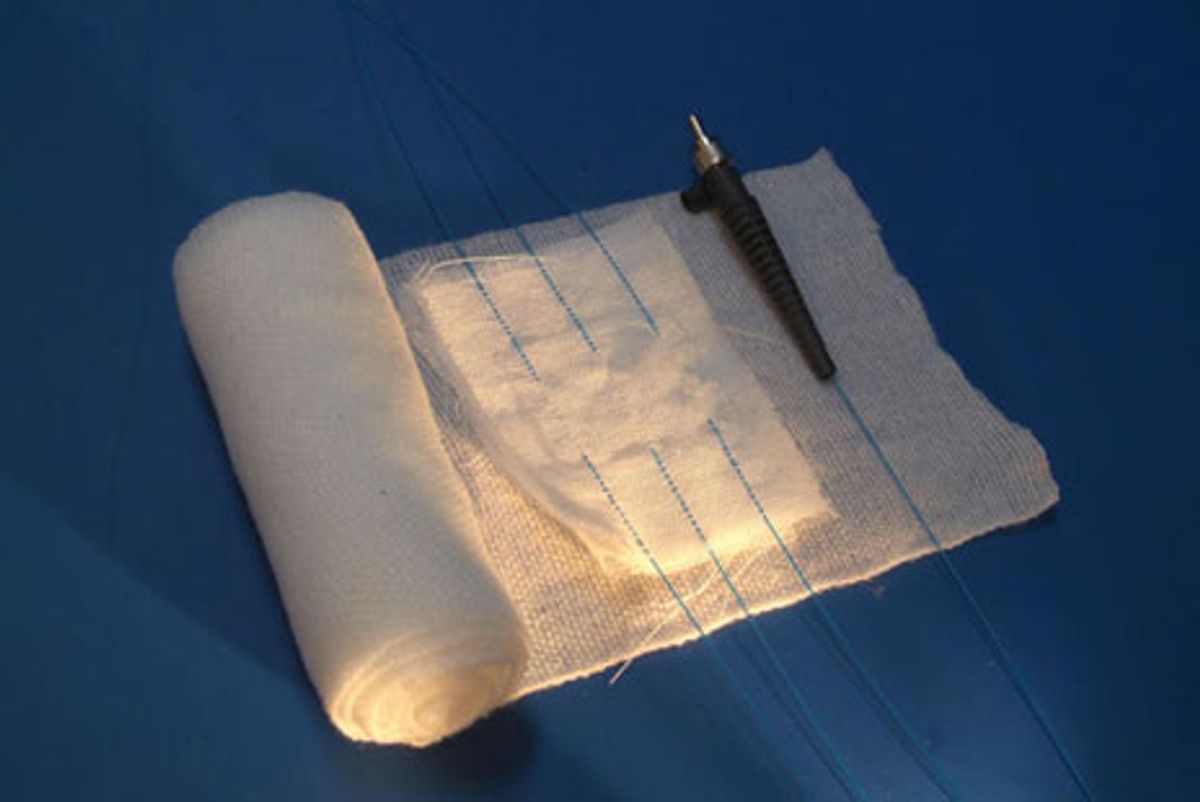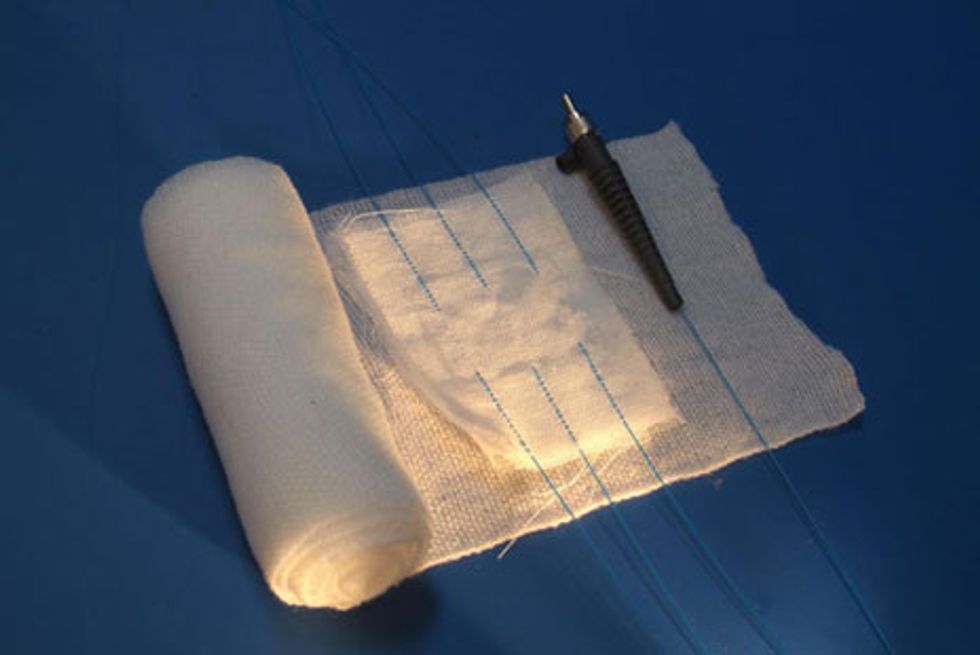23 May 2011—Monitoring a wound as it heals should get easier thanks to a new kind of optical fiber that could become a part of everyday bandages. The fiber’s coating alters in color in response to changes in acidity, a key health indicator in wounds. The core of the fiber carries light to and from an attached device, which caregivers could use to monitor a wound in real time, says Bastien Schyrr, a Ph.D. student in biomedical engineering at the University of Fribourg, in Switzerland, who last month presented results of a laboratory trial in which the enhanced bandage detected acidity changes in a solution containing human serum.
Wound monitoring is a "massive problem," says bioengineer Patricia Connolly of the University of Strathclyde, in Glasgow, who was not involved in Schyrr’s work. "In the UK alone there are 200 000 people with chronic wounds." Many of them are recovering surgery patients, diabetic patients, and others confined to bed and subject to pressure sores. To check on the healing progress, nurses must sometimes take samples from a wound—an invasive process with a risk of infection—and send them to a laboratory, where they are assessed for signs of infection and identification of bacteria. Schyrr’s fiber system, which detects the acid-induced change in the fiber by shining light into one end of a waveguide and measuring the color of the light coming out, could measure such things without having to lift the dressing.
Schyrr’s colleague Lukas Scherer, at the Swiss Federal Laboratories for Material Testing and Research, in St. Gallen, says that the main challenge for their optical-fiber biosensor was making the light-carrying fibers flexible enough so they could be included in a regular dressing. "I’m originally a synthetic chemist, and I thought you just put fiber in a machine and it makes textile," Scherer recalls. It wasn’t that easy.
The team experimented for two years with different preparations of their proprietary fibers. The final product had to let enough light through to carry a signal from inside a bandage, like a glass fiber, yet be flexible enough to stitch into a mass-produced bandage. "When we can do tight knots with the fiber, we know it’s flexible enough," Scherer says. But first they had to strip the outer layer of the fiber using a press—"basically like doing spaghetti," Scherer says—before they could replace it with the acid-sensitive outer layer.
Now Schyrr is working on calibrating the light signal with acidity levels in human serum and is planning tests in live animals. The team, part of the Swiss TecInTex industrial-academic collaboration, is also in talks with several companies to commercialize the technology, Scherer says. The presence or absence of certain enzymes and other biomarkers can also indicate when skin cells begin healing, and the TecInTex collaboration plans to include enzyme monitoring in future versions of their fiber.
The fiber dressing is not the only such technology in development. Connolly is CEO of a spin-out company, Ohmedics, in Glasgow, for which her team designed a product marketed as WoundSense. Its external meter connects to a disposable sensor thatindicates the moisture level of a wound without disturbing the bandage above it. Other groups are testing biosensors, such as electronic chemical sniffers, infrared monitors, and hydrogels that transmit wound information without interfering with dressings.
By itself, the Swiss team’s wound sensor won’t be enough to tell a nonexpert caregiver what to do, because there are too many other factors involved. But it should help experts make better decisions. "It is a very big challenge to adapt wound care to the individual patient and the medical condition that you’re looking at," says Connolly. "But the field needs these new approaches."
About the Author
Lucas Laursen is a freelance journalist based in Zurich. In the September 2010 issue of IEEE Spectrum, he wrote about a computer system that warns farmers when laying hens are going to start murderous rampages.

